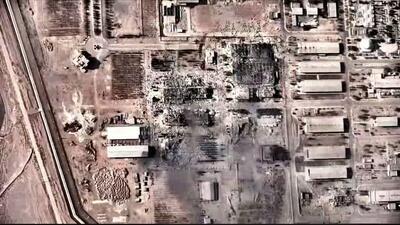
The aftermath of Israeli strikes on Iran’s Isfahan nuclear facility
| Published June 21, 2025
Israel has carried out a second wave of airstrikes targeting Iran’s Isfahan nuclear facility, shortly after Tehran launched a volley of five ballistic missiles toward central Israel overnight. The latest strike follows the initial Israeli attacks on June 13th.
Tensions in the Middle East escalated sharply on June 21, 2025, as Israeli fighter jets launched a powerful series of airstrikes on Iran’s Isfahan nuclear facility — a key site in Tehran’s uranium enrichment program. The attack, one of the most aggressive in recent years, came after Iran formally withdrew from nuclear negotiations, setting off a new wave of military retaliation across the region. With damage reported at several above-ground installations, the air war between Israel and Iran has now entered a dangerous phase, drawing international concern over the potential for broader conflict and nuclear risk.
🇮🇱 Israeli Airstrikes on Iran’s Nuclear Sites
-
Isfahan Nuclear Facility Targeted Twice: Israeli forces carried out a second wave of airstrikes overnight, hitting Iran’s Isfahan nuclear complex — including centrifuge and uranium-conversion facilities, as well as missile launchers nearby.
-
Massive Strike Force Deployed: Reports indicate around 50 fighter jets dropped 150–100+ precision munitions in coordinated strikes across multiple nuclear and military targets.
-
No Nuclear Leakage Detected: Iran’s Fars news agency and the IAEA confirm no radiation or hazardous material release. The UN agency also noted damage limited to above-ground structures
🎯 Strategic & Human Toll
-
Major Blow to Iran’s Nuclear Progress: This is the latest in a series of attacks aiming to significantly delay Iran’s nuclear timeline — officials estimate setbacks of 2–3 years
-
High-Profile Casualties: The strikes reportedly killed several IRGC commanders and nuclear scientists across sites including Natanz — compounding earlier losses
-
Escalation in Retaliatory Strikes: Iran responded with ballistic missiles and drone attacks targeting Israeli infrastructure. While civilian impact has been limited, sirens and minor damage have been reported .
-
Regional Tensions Heightened: The U.S. has deployed strategic assets (e.g., B‑2 bombers to Guam), and non-state actors like the Houthis have issued threats — raising fears of a broader regional conflict
⚠️ Risks & Next Moves
-
Radiological, But Manageable: Experts say there’s “no immediate external radiation” but warn of possible localized uranium hexafluoride releases — chemical hazards rather than nuclear fallout.
-
IAEA Confirms No Underground Damage: The agency found no hits on deeply buried key facilities (like Isfahan’s main cascade halls), but above-ground workshops were impacted.
-
Nuclear Talks Put on Ice: Tehran formally ruled out renewed negotiations unless Israel halts its strikes .
 Implications
Implications
-
Nuclear Timeline Disrupted
Israel’s strikes likely set back Iran’s uranium enrichment capabilities by 2–3 years, buying time but also provoking a hardened stance from Tehran. -
Collapse of Diplomacy
With Iran officially rejecting renewed nuclear talks, diplomatic avenues have narrowed, increasing the risk of sustained military escalation. -
Regional Destabilization
The attack deepens instability across the Middle East, triggering retaliatory missile and drone strikes, and heightening the threat of a wider regional war involving proxies. -
Global Energy Shock Risk
Escalating conflict in the region could disrupt oil flow through the Strait of Hormuz, pushing up global energy prices and rattling markets. -
Civilian Exposure
Missile alerts and debris-related injuries in urban areas of both Israel and Iran raise alarm about growing risks to civilian populations on both sides. -
International Polarization
Global powers may be forced to take sides or call for de-escalation, further dividing the international community amid competing interests in the region.
 Overall Takeaway:
Overall Takeaway:
The Israeli strike on Iran’s Isfahan nuclear facility marks a dangerous tipping point in a long-simmering conflict, pushing both nations closer to open war. With diplomacy now off the table and retaliatory attacks already underway, the region faces an alarming new phase of instability. While Israel may have achieved a temporary setback to Iran’s nuclear ambitions, the broader consequences — civilian risk, regional volatility, and global economic ripple effects — suggest that the cost of escalation may soon outweigh the gains.





Be the first to comment